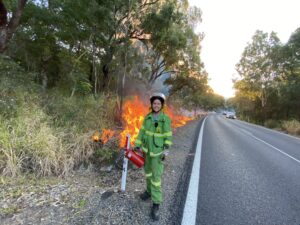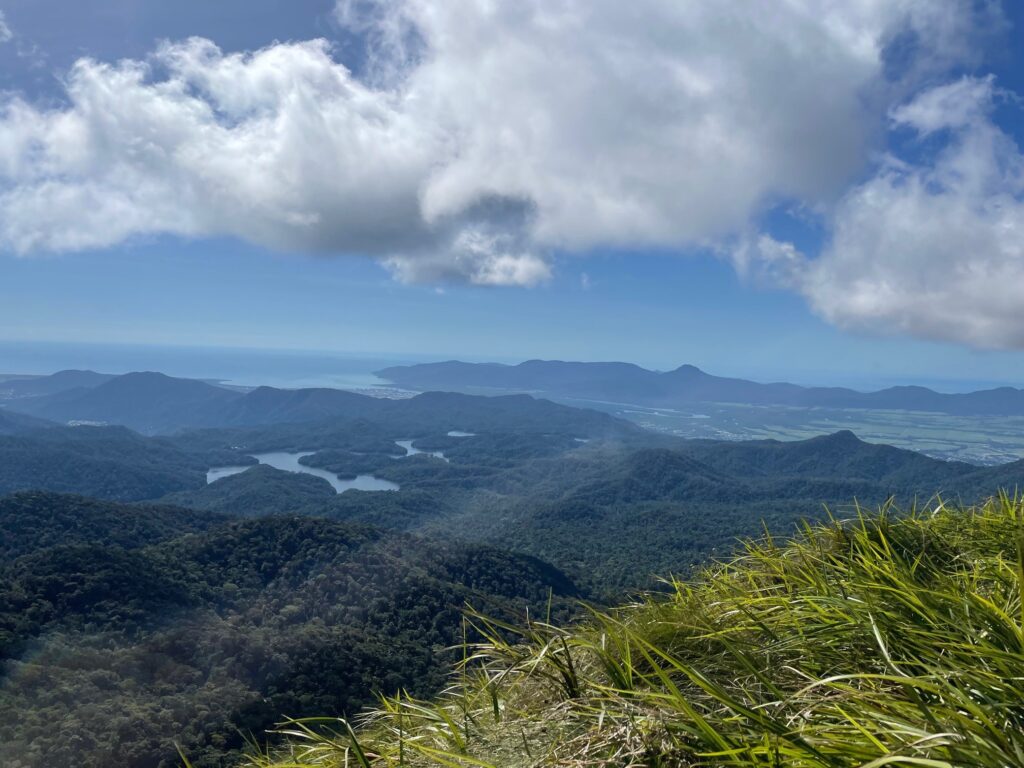Protected Magazine
Ranger Spotlight – Ranger Jessica Harris
For Ranger Jess, building a career in environmental management and conservation as a Ranger was the obvious path to pursue. Having always had a passion for the natural environment and wildlife, growing up going camping every school holidays, Jess was often found by her family out looking for animals around the camp site. This continued into Ranger Jess’ adult life where she loves being in nature at every chance she gets—whether it be camping, hiking, swimming in creeks or spotlighting for wildlife at night.
How long have you worked in national parks?
I began my career in government back in 2015 as a Wildlife Officer and then progressed to working as a Ranger in 2017 and have been doing it ever since.
Which parks have you worked in?
I have spent my time being a Ranger in the greater Cairns and Atherton Tableland region in North Queensland. The first two years I spent working around Lake Eacham and Mareeba where I fell in love with the Davies Creek area of Dinden National Park. I then moved to Cairns and have since managed the parks between Cairns and Port Douglas and out west to Kuranda and Speewah. This includes Barron Gorge, Kuranda and Macalister Range National Parks and several smaller conservation parks including Earl Hill, Smithfield and Jumrum Creek.
Where do you work now and what is special about your current park?
I am very lucky to live and work in the Wet Tropics World Heritage Area of tropical north Queensland which is home to some of the oldest rainforests in the country. We are also bordering the Great Barrier Reef! Unlike many of the great parks in Queensland that are vast and remote, many of my parks are surrounded by residential or urban areas, bordered by major highways or have major attractions that see millions of visitors a year (Barron Falls, Barron Gorge National Park) and attract world class sporting events (Smithfield Conservation Park). There are many stakeholders invested in these parks including Traditional Owners, neighbours, other government agencies, researchers, commercial operators, interstate and international visitors and local visitors. This brings a great level of complexity managing the needs and expectations of everyone while ensuring conservation values are maintained. This makes managing these parks both interesting, challenging and rewarding all at the same time.
What is your most memorable moment as a ranger?
It’s hard to pick a particular moment in time but I’ve had some great opportunities to be deployed to respond to some large wildfires, the most memorable being in the northern dry tropics region of Forty Mile Scrub National Park and the famous K’gari in Great Sandy National Park. Although it’s always sad to see the devastating effects of these large and damaging wildfires, it also reinforces the importance of planning and implementing a robust planned burning program to try and avoid these large and unstoppable fires from spreading across the landscape. Watching fire race through the crown of a forest canopy while the sky turns black is very sobering and reminds me of the immense power of fire and the vulnerability of ecosystems.

Can you describe your favourite national parks experience?
My favourite way to experience the beautiful national parks within the Wet Tropics World Heritage Area that I call home is to venture out hiking to pristine waterfalls or mountain summits with sprawling views. There are so many tracks to walk and creek lines to explore you could never get bored! I am truly thankful to live in such a gorgeous place with so many wild and untouched areas.
One of my favourite spots to sit and ponder life is taking in the views of the Cairns area and out to the Great Barrier Reef while sitting atop Kahlpahlim Rock in the Lamb Range of Dinden National Park!
What is the best part about working in a National Park?
The most rewarding part of managing our national parks is seeing our hard earned management actions like fire management result in noticeable improvements in the landscape and structure of forests. Fire management, if done correctly, is the best tool we can use to manage large fire adapted landscapes. Re-introducing planned burning to areas that have lacked fire for many years and monitoring the change over the years and seeing it slowly return a healthier ecosystem is immensely satisfying and reminds me why I love doing this. I’m proud to be a caretaker of our national parks!
What is your top tip for visitors to your park?
Just get out there and enjoy them! Plan ahead and find the walking tracks in your area that you haven’t explored yet and just do it! Prepare a hiking pack with plenty of water, snacks and safety gear, tell a friend where you’re going and go climb that mountain or swim under that waterfall! Life is too short to not get out into nature at every opportunity, you will never regret what nature will do for you!



